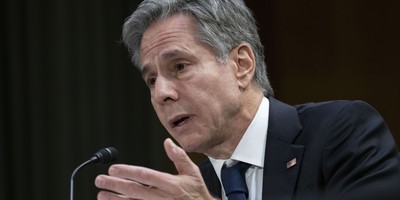Someone once said that Senator Hubert Humphrey, liberal icon of an earlier generation, had more solutions than there were problems.
Senator Humphrey was not unique in that respect. In fact, our present economic crisis has developed out of politicians providing solutions to problems that did not exist-- and, as a result, producing a problem whose existence is all too real and all too painful.

What was the problem that didn't exist? It was a national problem of unaffordable housing. The political crusade for affordable housing got into high gear in the 1990s and led to all kinds of changes in mortgage lending practices, which in turn led to a housing boom and bust that has left us in the mess we are now trying to dig out of.
Usually housing affordability is measured in terms of how much of the average person's income it takes to cover either apartment rent or a monthly mortgage payment.
There were certainly places here and there where it took half a family's income just to put a roof over their heads. Many such places were in coastal California but there were a few others, here and there, on the east coast and elsewhere.
But, vast areas of the country in between-- "flyover country" to the east coast and west coast elites-- had housing prices that took no larger share of the average American's income than in the decade before the affordable housing crusade got under way.
Why then a national crusade by Washington politicians over local problems? Probably as good an answer as any is that "It seemed like a good idea at the time." How are we to be kept aware of how compassionate and how important our elected officials are unless they are busy solving some problem for us?
The problem of skyrocketing housing prices was all too real in those places where this problem existed. When you have to live on half your income because the other half goes for housing, that's a real downer.
Recommended
Almost invariably, these severe local problems had local causes-- usually severe local restrictions on building homes. These restrictions had a variety of politically attractive names, ranging from "open space" laws and "smart growth" policies to "environmental protection" and "farmland preservation."
Like most wonderful-sounding political slogans, none of these lofty goals was discussed in terms of that one four-letter word that people do not use in polite political society-- "cost."
No one asked how many hundreds of thousands of dollars would be added to the cost of an average home by "open space" laws, for example. Yet empirical studies have shown that land-use restrictions added at least a hundred thousand dollars to the average home price in dozens of places around the country.
In some places, such as coastal California, these restrictions added several hundred thousand dollars to the price of the average home.
In other words, where the problem was real, local politicians were the cause. National politicians then tried to depict this as a national problem that they would solve.
How would they solve it? By pressuring banks and other lenders to lower their requirements for making mortgage loans, so that more people could buy houses. The Department of Housing and Urban Development gave the government-sponsored enterprise Fannie Mae quotas for how many mortgages it should buy that were made out for people for low to moderate incomes.
Like most political "solutions," the solution to the affordable housing "problem" took little or no account of the wider repercussions this would entail.
Various economists and others warned repeatedly that lowered lending standards meant more risky mortgages. Given the complex relationships among banks and other financial institutions, including many big Wall Street firms, if mortgages started defaulting, all the financial dominoes could start falling.
These warnings were brushed aside. Politicians were too busy solving a national problem that didn't exist. In the process, they created very real problems. Now they are now offering even more solutions that will undoubtedly lead to even bigger problems.
























Join the conversation as a VIP Member